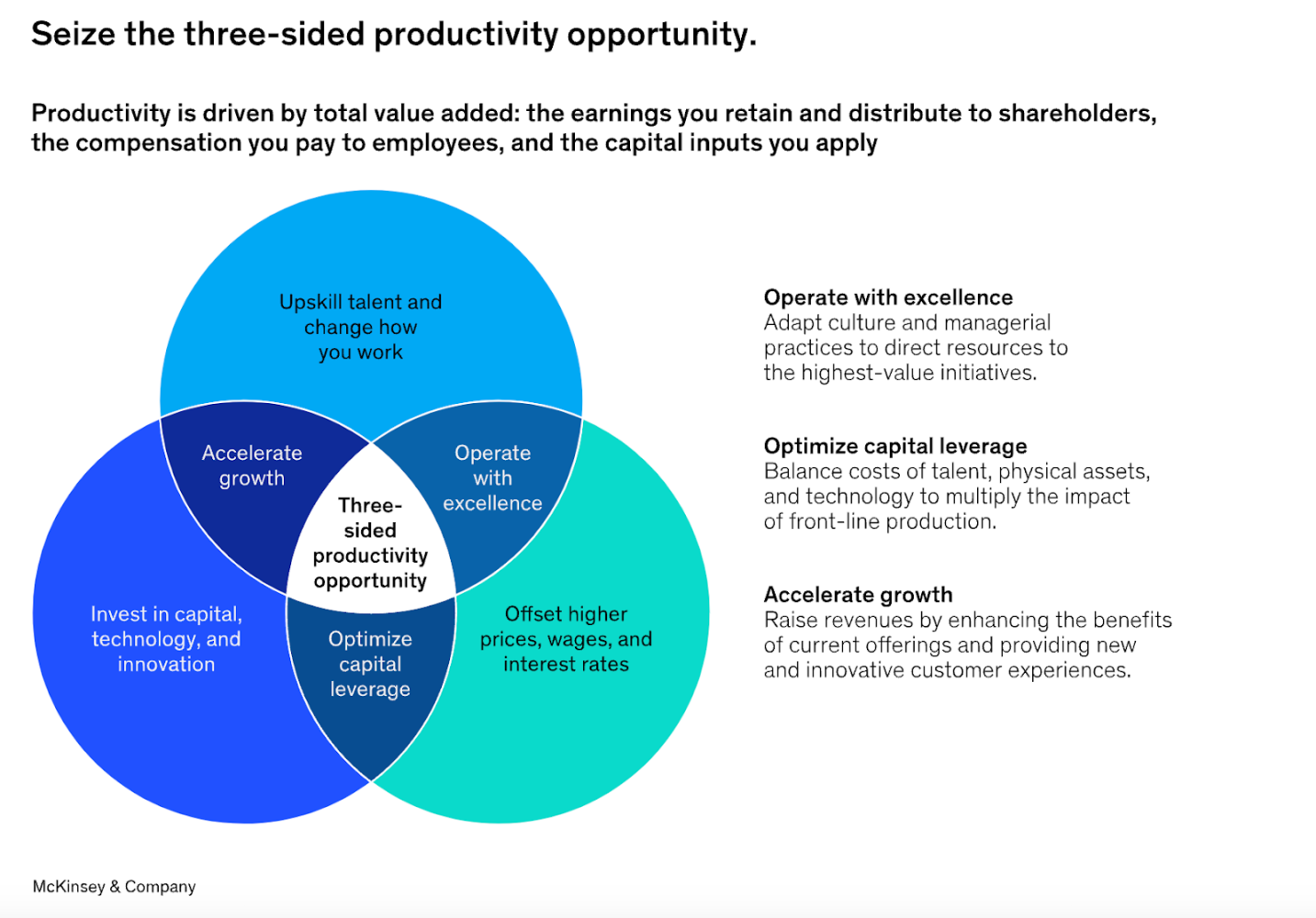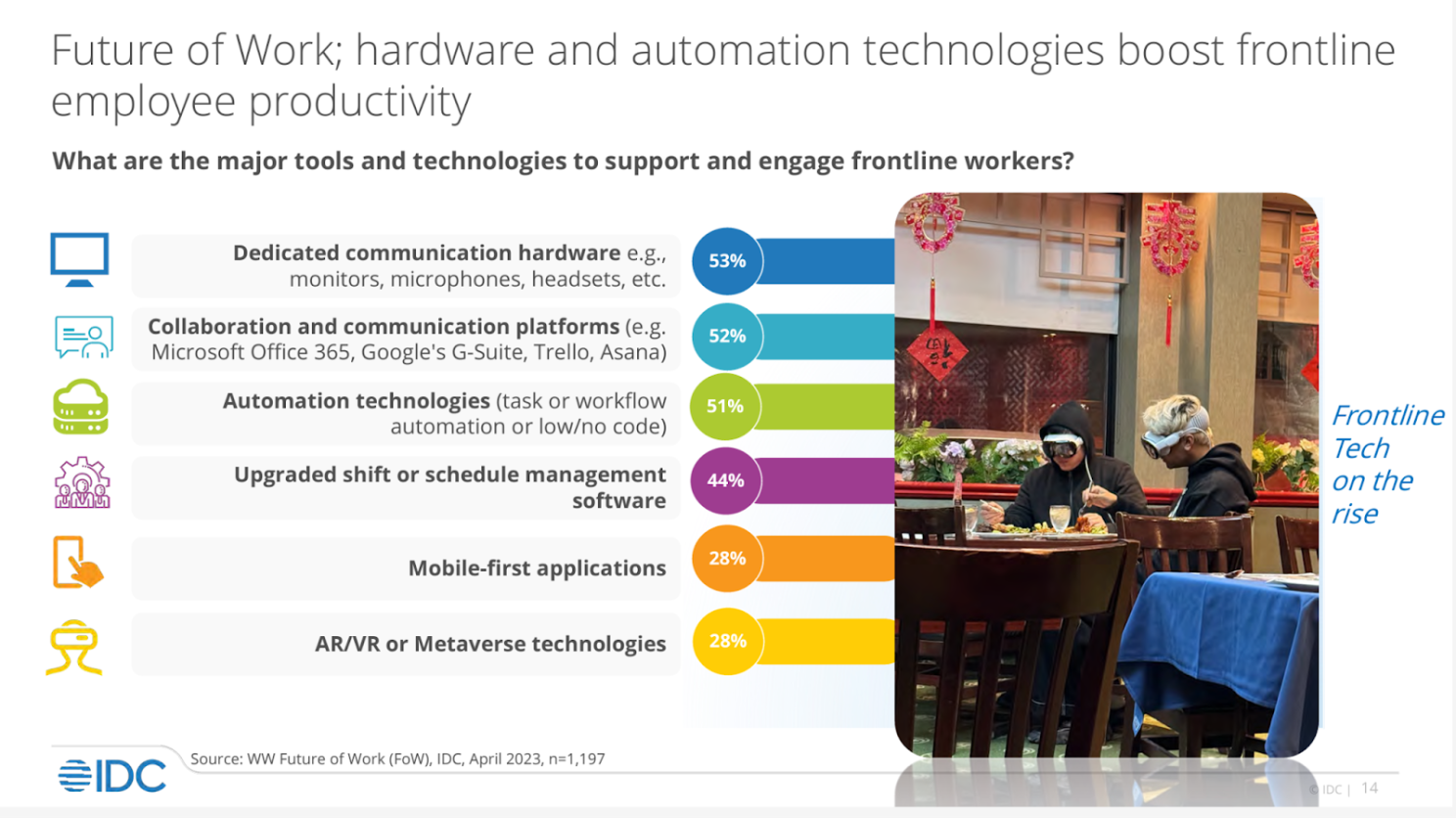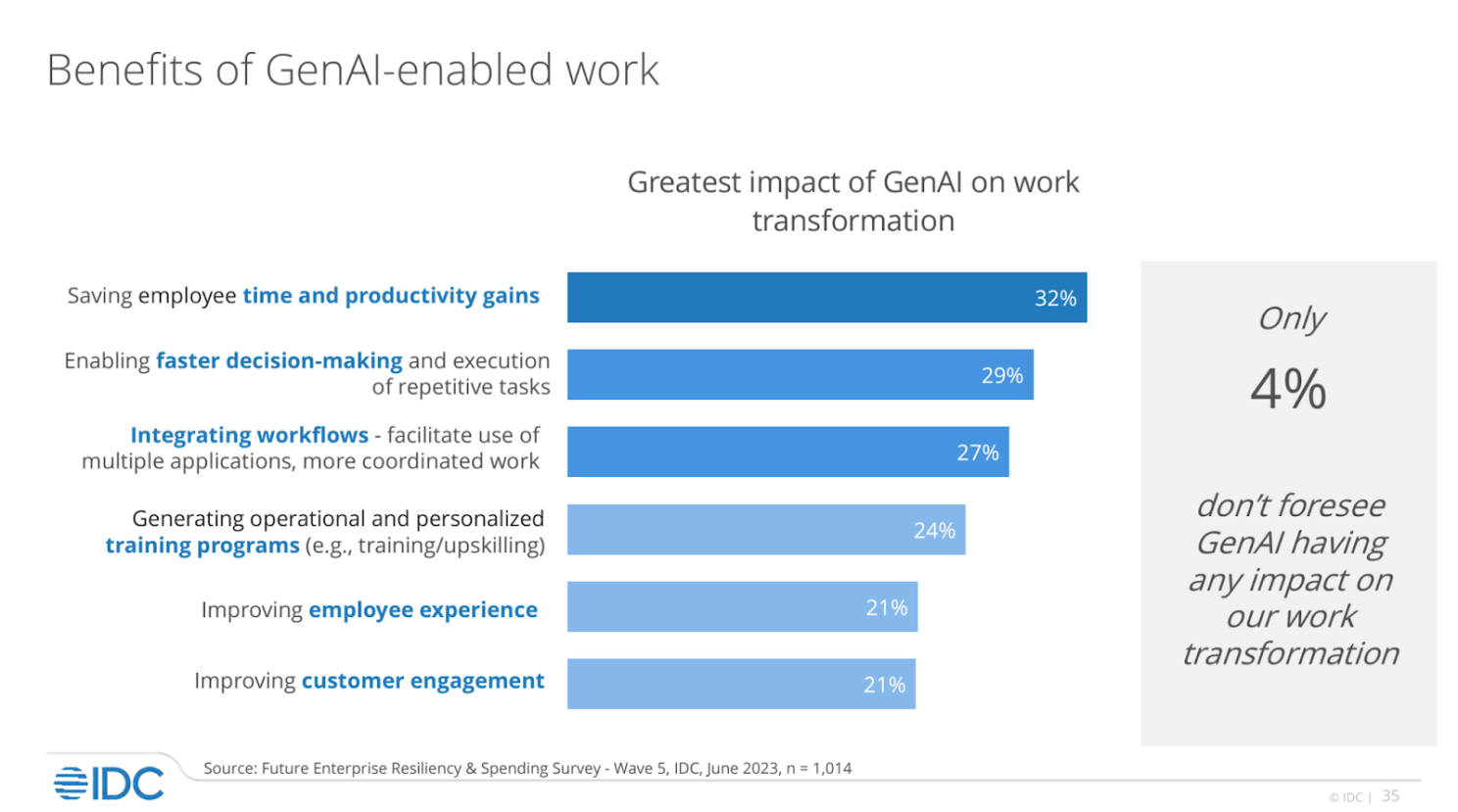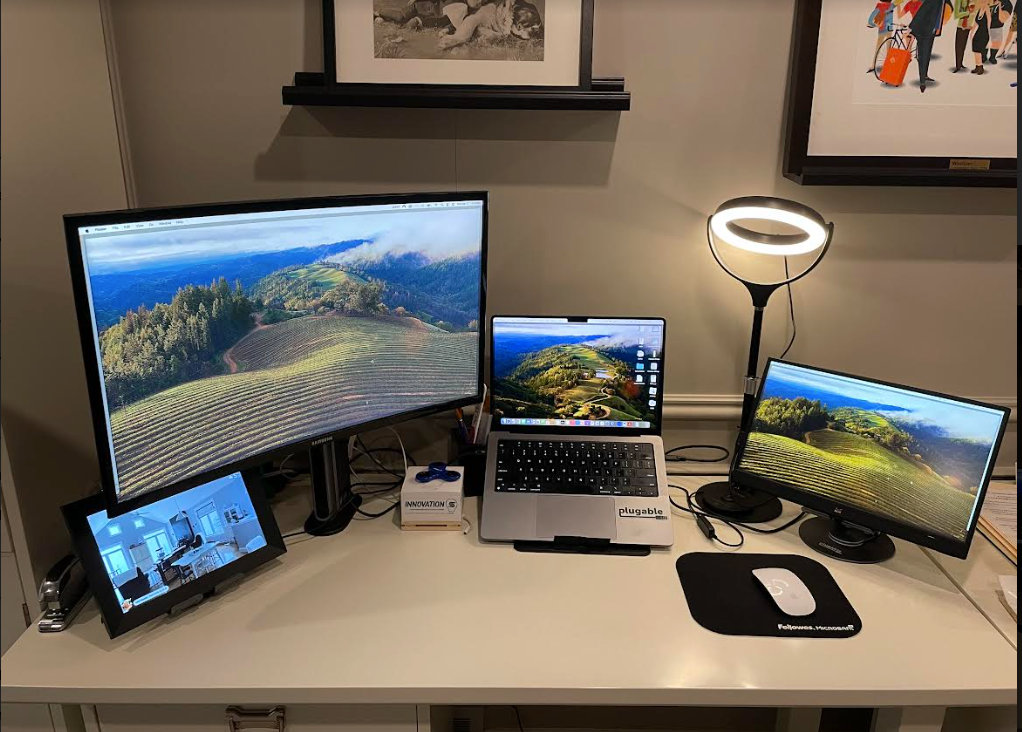Workspace Transformation - How to Boost Employee Productivity with AI and Hardware
Lynn Smurthwaite-Murphy | June 07, 2024
AI is transforming the way we work, and redefining how we think about time management. From promises of productivity to the anticipated rise of the AI-enabled PC, take a look at the new era of advanced productivity in the workplace, and get advice on how to prepare.
Quote from McKinsey's Productivity Imperative
"Productivity can transform entire companies, industries, and even economies if we can collectively accelerate progress in months and years rather than decades—something companies proved they could do during the pandemic. Productivity is the imperative that can deliver business outperformanceanda future of abundance."
At the Global Technology Distribution Council (GTDC) conference held this past February, Doug Holtz-Eakin, an American Economist, spoke of the “productivity miracle” in 2023 as being the main reason the US avoided a recession, noting that this was the largest swing in the past century from -2 to +2.
It was this significant productivity gain that took some of the pressure off wages and price increases. Productivity has been dominating headlines in recent months as more countries announce their figures. The fact that Canada lags behind most G7 countries in productivity has been a topic of concern with the Bank of Canada warning that weak productivity is an economic "emergency".
The Workspace Productivity Opportunity
The chart below shows McKinsey’s three-sided productivity opportunity model where investing in technology and innovation are a key component.

Further to the chart, Crawford Del Prete, President IDC shared the results of their annual survey of Enterprises IT spend priorities (presentation from GTDC conf). Respondents were asked to rank which buckets were most immune to budget cuts regardless of the macroeconomic environment with infrastructure and IT operation optimization initiatives, AI and Automation, and Workplace Solutions landing in the top five.
The slide below is taken from his presentation and shows dedicated communication hardware (monitors) at the top of the list for hardware and automation technologies that boost frontline employee productivity.

In terms of automation, time management, and achieving workplace productivity gains rank at the top for the greatest impact on GenAI work transformation. Over the next 2-3 years, an elongated refresh cycle is anticipated as AI-capable PCs are adopted to support the modern office worker. With this shift, workers will need multiple monitors to support the expected increase in applications and automation demands their evolving roles will require.

The modern desk job uses multiple applications simultaneously
Why would monitors top this list of tools and technologies to support and engage frontline workers? Well, how many tabs do you currently have open? Speaking for myself, the answer is too many. The modern office worker needs enhanced workspace productivity tools and a setup to accommodate more tabs, applications, and demands than ever before.
The average desk worker uses eleven applications to complete their tasks. That’s up from just six in 2019, according to a recent Gartner report. GenAI is topping the list of new applications transforming the way we work. Simply stated, it is increasingly impossible to perform a desk job without multiple screens.
This sharp increase in AI applications is driving the switch from standard PCs to AI-capable PCs. According to Canalys's latest forecasts “these PCs, integrating dedicated AI accelerators, such as Neural Processing Units (NPUs), will unlock new capabilities for productivity, personalization and power efficiency, disrupting the PC market and delivering significant value gains”. They are predicting a staggering 44% CAGR for AI capable PC’s over the next 4 years. “PCs with dedicated on-device AI capabilities will enable new and improved user experiences, driving productivity gains and personalizing devices at scale while offering better power efficiency, stronger security, and reduced costs associated with running AI workloads.”
From Fortune CEO Poll released March 20, 2024
"Generative AI has invaded the corporate agenda at a speed unmatched by any previous technology. 58% of respondents said they are already implementing it to “automate manual tasks,” 56% said they are using it to increase efficiency, 50% are using it to generate content, and 42% are using it to help write new code."
Technology Enablement’s role in Employee Satisfaction
Workspace technology tools are now considered essential with technology enablement playing an increasingly important role in employee engagement. There is a direct correlation between technology enablement and talent recruitment/retention with 62% of employees citing access to best-in-class technology as a highly motivating factor in their work performance.
According to a recent survey from Unisys Corp, 49% of employees say they lose between one and five hours of productivity each week dealing with IT issues. This can be a challenge for beleaguered IT departments busy driving large-scale transformation projects.
I’m now primarily a remote worker. Most of my day is spent on video calls, analyzing multiple forms of business intelligence, and merging inputs from multiple sources. The fact is, I simply cannot do my job anymore without at least two screens. When I added a 3rd, I couldn’t imagine going back to just two.
My third monitor is now dedicated to my calendar and email when I am on a call so I can track my schedule and keep an eye out for urgent matters. When I am not in meetings, I might dedicate my third screen to ChatGPT if I need to get a communication out, or my home security cameras if I am waiting for a package. I keep my main two screens dedicated to immediate tasks.

A Universal Docking Station to connect and streamline
While upgraded PCs and monitors top the list for enabling the modern productive workspace, a universal docking station is an integral part of the solution. The docking station will expand connectivity, and functionality while streamlining the user's workflow.
Plugable enhances the connected desk with a strong emphasis on security and compatibility, whether in the office, at home, or on the move. Our products support the widest range of connectivity options, recognizing that most workspace environments require universal access. Since many workspaces, like client boardrooms, hotels, or office hot desks, are shared, the modern worker needs maximum flexibility to be effective in various settings. As an American-owned company, our solutions are fully supported by the same North American technical team who design our products. We receive a lot of notes of appreciation from customers we have helped get back to work every week.
View Other Articles in Category
Related Articles


Loading Comments